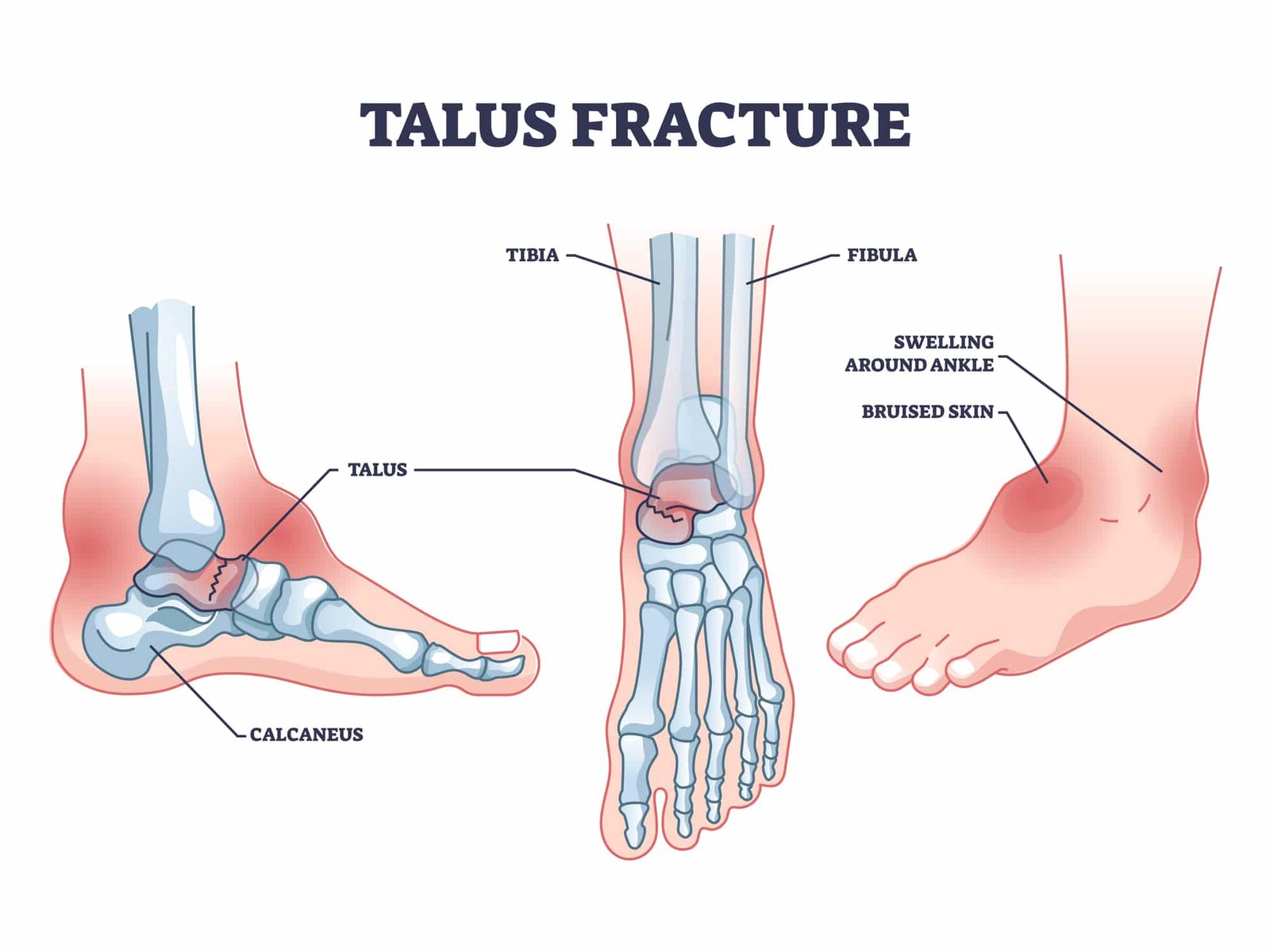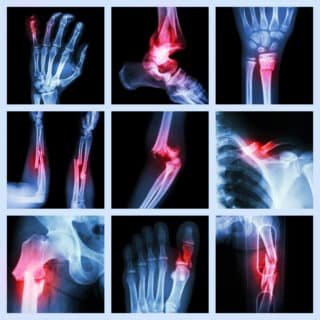FRACTURES IN CHILDREN

Fractures account for 15% of all injuries in children. Children’s injuries not only differ from adults’ but also vary according to the child’s age. Babies, children and teenagers suffer different injuries. Boys are injured more often than girls. Injuries and the rate of fractures increase with age. Injuries are a part of a child’s life. Fractures become more common as sports activities increase. The most common site of injury is the wrist. Age affects the type of injury.
The possibility of RECONSTRUCTION has a significant impact on the treatment of pediatric fractures. The musculoskeletal system of children is different from that of adults, a fact which explains why fractures in children are different. These differences progressively decrease with age.
Key points for a fracture in a child
- A fracture is a partial or complete break of the bone.
- A fracture occurs when more force is applied to the bone than the bone can absorb. It can occur from overuse injuries, falls, trauma, or a direct blow to the body.
- A child with a broken bone may have pain, swelling, and difficulty moving the injured area.
- Treatment may include a cast or brace, pain medication, or surgery.
Common pediatric fractures
- broken collarbone
- broken hand
- broken elbow
- broken wrist
- broken hip
- broken knee
- broken leg
What are the symptoms of a fracture?
Symptoms of a fracture include:
- pain or swelling in the injured limb
- obvious deformity in the injured area
- difficulty using or moving the injured area in a normal way
- bruising or redness in the injured area
Get medical attention right away if your child shows any of the symptoms of a fracture.
What are the causes of fractures?
Fractures are commonly associated with sports accidents, falls from heights, and bicycle and car accidents. Poor nutrition, a diet low in calcium and obesity can all increase a child’s risk of fracture.
How are the bones of a child different from the bones of an adult?

Children’s bones grow throughout childhood. This growth potential allows children’s bones to “remodel” or naturally correct some or all of the deformity caused by a fracture. Because children’s bones grow, they also break in different patterns compared to adult bones.
- Children’s bones are more flexible – Growing bones tend to bend before they break, which often leads to unique fracture patterns.
- Children have vulnerable growth plates – Children have soft areas of cartilage at the ends of their bones, called growth plates, where growth takes place. These areas of development are often at risk when a child suffers a fracture. Growth plates can be injured at any stage of development, but are most common in early adolescence, when they are in their final stage of growth.
- Children’s bones heal faster – A thick layer of connective tissue surrounds a child’s bones and protects them from injury and fracture. This tissue provides blood supply to the bones. If the bone breaks, the body uses this blood supply to replace the damaged cells and heal the bone.
Next steps
Tips to help you get the most out of a visit to your child’s doctor:
- Find out the reason for the visit and what you want to happen.
- Before your visit, write down the questions you want answered.
- At the visit, note the name of a new diagnosis and any new medications, treatments or tests. Also note any new instructions the doctor gives you about your child.
- Find out why a new drug or treatment is being prescribed and how it will help your child. Also find out what the side effects are.
- Ask if your child’s condition can be treated in other ways.
- Learn why a test or procedure is recommended and what the results could mean.
- Learn what to expect if your child does not take the medicine or the test or procedure.
- If your child has a follow-up appointment, note the date, time and purpose of that visit.
- Learn how to contact your child’s doctor after office hours. This is important if your child gets sick and you have questions or need advice.
How are fractures diagnosed?
Children’s bones are more flexible and have more healing potential than adult bones. This is good news for recovery, but it also means your child should get medical attention as soon as possible to make sure the bone is in the right place as it heals.
Your child’s doctor will carefully examine the injured area for tenderness, redness, and swelling and perform diagnostic imaging tests to determine what type of treatment is appropriate. Diagnostic tests for fractures may include:
- x-ray
- Computed Tomography
- magnetic resonance imaging (MRI): Some fractures (such as stress fractures) don’t show up on an X-ray until a few weeks after the bone starts to hurt. MRI can detect smaller fractures before they get worse.
- bone scan
What are the treatments for a broken bone?
Treatment will be based on the type of fracture, its severity and your child’s age. In most cases, fractures in children are treated with a splint or cast. These immobilize the injured bone while it heals.
Splints
Doctors often put a splint on a newly broken bone if they are concerned about swelling. If the injured area swells, the cast can become too tight and reduce blood circulation. Usually, the splint will be replaced with a cast once the swelling subsides. Splints are also used for small fractures that do not require a cast.
Cast
Casts are stronger than splints and provide more protection to the injured area. Casts have two layers: a soft inner layer that rests against the skin and a hard, outer layer that protects the injured bone and prevents movement while the bone heals. The type of cast used will depend on the type of fracture.
Surgery
Severe or unstable fractures require surgery. To increase the chances that the bone will heal in the right place, your child’s doctor will decide very early in treatment whether to operate. In some cases, however, if the area around the fracture is swollen, the procedure may need to wait until the swelling goes down.
How long does it take for a fracture to heal?
Healing time depends on the type and severity of the fracture. Simple fractures may take a few weeks, while more complex fractures may require a longer period. Follow-up appointments are vital to monitor progress.
Can my child resume normal activities after a fracture?
It depends on the type of fracture and the treatment. The doctor will provide guidance on when it is safe for your child to return to regular activities, including sports.
After treatment
A fracture in a child can be a worrying experience for both the parents and the child involved. Once the initial phase of treatment and healing has taken place, the question becomes: Can my child resume normal activities? Although caution is necessary, a well-managed approach can help your child get back to normal.
Consult a doctor
Before making any decisions, it is important to consult your child’s doctor. They will assess the specific type of fracture, the progress of healing and provide advice on when and how the child should return to activities.
Resuming normal activities should be a gradual process. Start with light and low-level activities that won’t put too much strain on the healing area. Encourage movements for flexibility and strength that do not cause discomfort.
Use protective equipment
Depending on the type of activity, consider using protective gear such as pads to protect the healing area. This extra layer of protection can prevent accidental bumps or drops that can hinder the healing process. Watch your child closely as he continues the activities. If they experience persistent pain, swelling or any signs of discomfort, it is essential to consult your doctor immediately.
Promote a balanced lifestyle that includes healthy eating, proper sleep and hydration. These factors contribute significantly to overall well-being and aid in the healing process.
Conclusion
While a fracture can temporarily disrupt your child’s daily life, a careful and gradual approach to resuming activities can contribute to a successful recovery. Working closely with doctors and prioritizing your child’s comfort will ensure a smooth transition back to their normal, active self.
- Category
- ΠΑΘΗΣΕΙΣ ΠΑΙΔΙΩΝ

